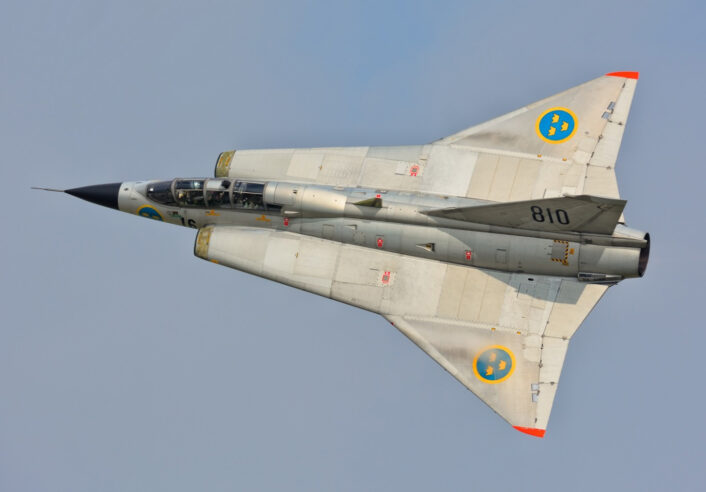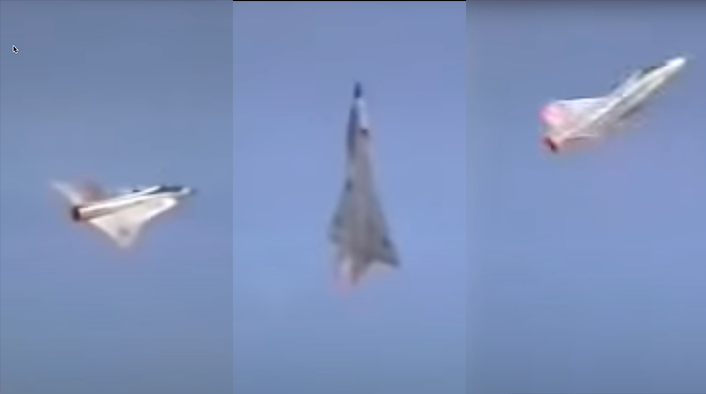Take a look at the Swedish Cobra Maneuver.
The Sukhoi Su-27 became famous all around the world for doing an aerobatic maneuver, named after the Soviet test pilot Viktor Pugachev, who performed it publicly in 1989 at the Paris Le Bourget air show: the “Pugachev’s Cobra” (or simply “Cobra”).
In a Cobra, the plane suddenly raises the nose to the veritical position (or beyond) before dropping it back to the normal flight, maintaining more or less the same altitude through the entire maneuver.
Image credit: Wiki
The Cobra, that can be somehow useful during a dogfight to suddenly slow down the speed (more or less as Maverick does in Top Gun movie), is not only performed by the Su-27 and subsequent variants: even the MiG-29 and the Lockheed Martin F-22 Raptor are able to perform such maneuver, with the latter highly facilitated by thrust vectoring engines. Most modern planes with thrust vectoring are capable to perform an even more effective and spectacular maneuver: the Kulbit.
Actually not only modern thrust vectoring or canard control surfaces give a plane the pitch control authority required to perform the Cobra. Indeed, even the Saab J35 Draken, a fighter plane manufactured in the ’50s (and retired from active service by its last operator – Austria – in 2005) could perform the Cobra as the following video (that has been around for a few years but was revived on FB lately) shows:
The Saab 35 Draken was a Swedish interceptor developed and manufactured by SAAB (Svenska Aeroplan Aktiebolaget) between 1955 and 1974. The aircraft featured an innovative but unproven double delta wing, which led to the creation of a sub-scale test aircraft, the Saab 210, which was produced and flown to test this previously-unexplored aerodynamic feature. According to SAAB, their first and only experimental aircraft in history (currently on display at the Air Force museum in Linköping, Sweden) “performed around 1,000 test flights over four years. The results provided valuable experience during development of the Saab 35 Draken.”
The full-scale production version of the Draken entered service with frontline squadrons of the Swedish Air Force on Mar. 8, 1960. During its career it was subject to several upgrades, the ultimate of these being the J 35J model. By the 1980s, the Swedish Drakens had largely been replaced by the more advanced Saab 37 Viggen fighter. The aircraft was eventually retired from active service by the Swedish Air Force in December 1999.










